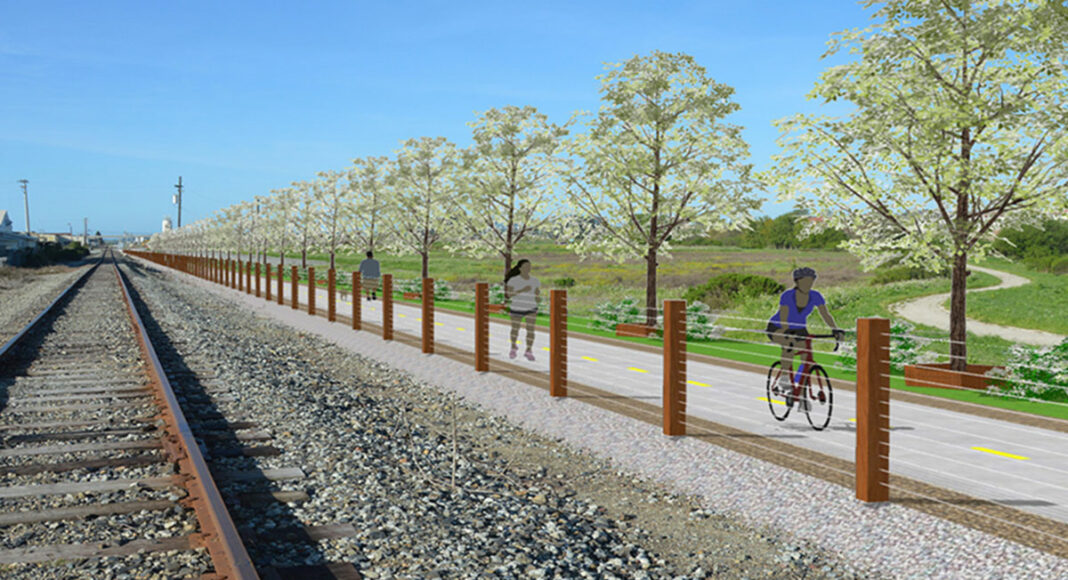The Watsonville City Council approved the fourth change to a contract with Granite Rock for Phase 1 of the city’s segment of the Coastal Rail Trail, bringing the total price for changes to $501,328.94.
The most recent contract change—included in the council’s consent agenda of Tuesday’s meeting—was a $120,135 charge. That cash will be used to move a water line running parallel to the proposed trail adjacent to existing rail tracks connecting Walker Street to Lee Road.
The water line was not shown in the initial plans prepared by the city.
Funding will be pulled from the Water Enterprise Fund’s Additional Water Main Replacement Project.
That change comes just two weeks after the council had to authorize a $337,920 alteration so that Granite Rock could treat the contaminated soil underneath the proposed trail. That cost was covered with funds from the Transportation Development Act provided by the Santa Cruz County Regional Transportation Commission.
The city awarded the original $1.45 million contact to Granite Rock in January. It paid for the contract through a pair of $600,000 grants from the Active Transportation Program and the State Transportation Block Grant as well a $200,000 donation from the Santa Cruz County Land Trust. The city also used $51,912.50 of its gas tax funds.
The current contract only covers Phase 1 of the project, which is part of the larger 32-mile Coastal Rail Trail that seeks to connect the southern and northern reaches of Santa Cruz County through a commuter rail and recreation trail system. Phase 2a and 2b of the 1.2-mile paved trail won’t be constructed for at least another two years.
Watsonville’s segment of the trail will connect to Monterey County’s portion of the Monterey Bay Sanctuary Scenic Trail Network, which will extend from neighboring Pajaro to Pacific Grove.















While always unfortunate, it is not unusual for unforeseen conditions and costs to arise during construction of any project. It is important to be clear about why these issues arise and from where the money comes to pay for the additional costs.
Why do these issues arise:
In every project, the design team is charged with defining the work needed to complete a project. The design team will exercise reasonable diligence in defining the existing conditions the contractor will encounter when construction begins. But it is not economically feasible to define every condition to be encountered below the ground surface as you would literally have to pepper the site with expensive subsurface borings. So when the digging begins, hidden subsurface conditions (like an area of contaminated soil or an old water line) are sometimes discovered.
From where comes the money:
The source of additional funds to address changes is an important consideration, especially for publicly funded projects. In this case, the additional funds came from sources other than the Rail Trail budget. For the water line, the Water Enterprise Fund’s Additional Water Main Replacement Project budget will cover the added cost. For the contaminated soil, the Transportation Development Act will cover the added cost.
The worst part of dealing with these unforeseen conditions is the delay in completing this project, an important safety improvement for pedestrians, cyclists and other active transportation users in Watsonville. Fortunately, additional funds were readily available and the delay will be minimal.
Once the trail is open, these unforeseen conditions will be quickly replaced with the smiles of rail trail users as they enjoy a new safe, level, car-free way to move around town.